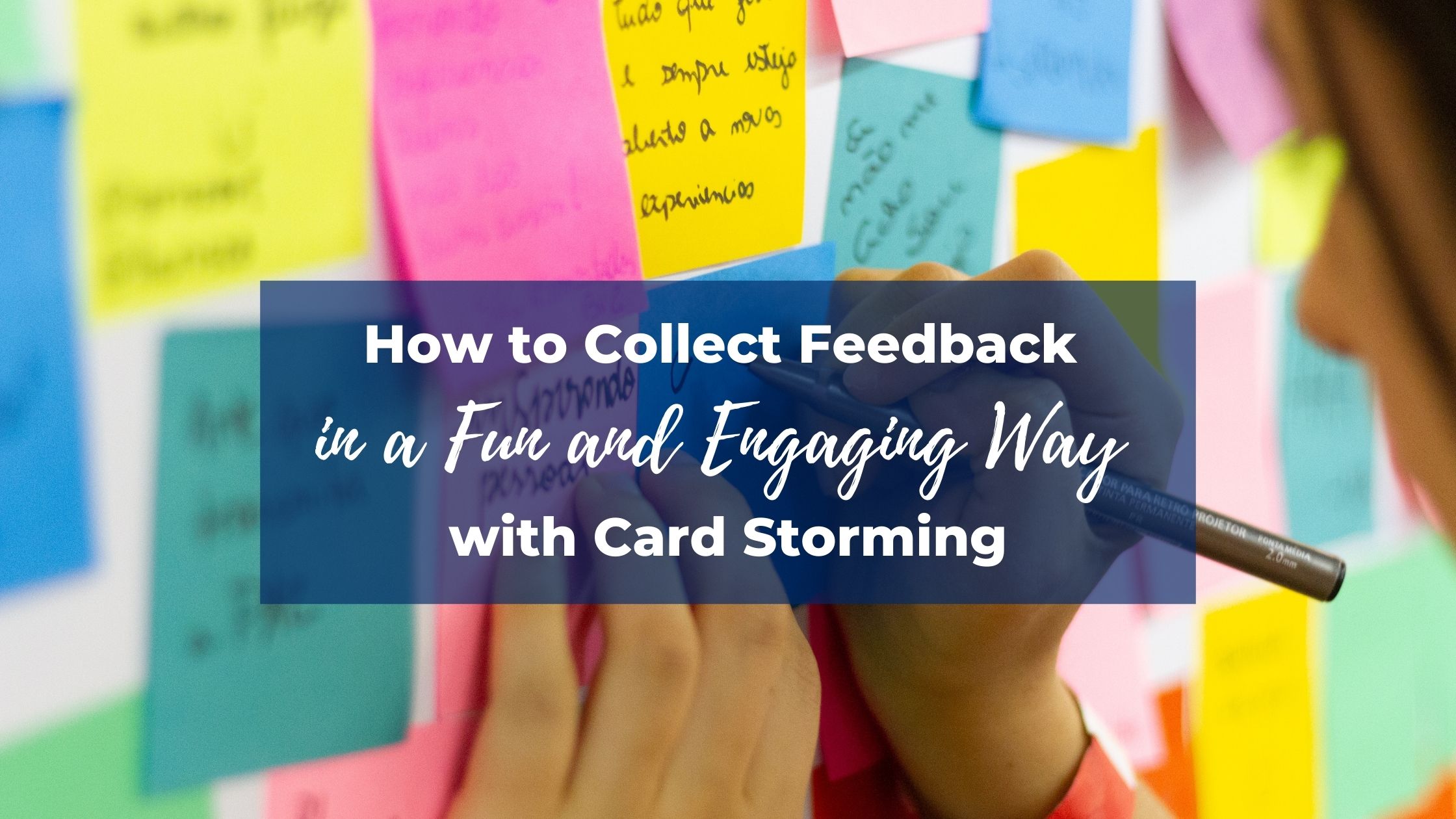
27 May How to Collect Feedback in a Fun and Engaging Way with Card Storming
Imagine you’re in charge of a visioning workshop for a project you’re working on. You need to know what residents of the study area envision for their community. You’re planning on hosting a meeting with community members to gather their feedback, but you’re not sure how to approach it, since there’s likely to be a ton of ideas. That’s where card storming comes into play!
Card storming is an interactive method of collecting feedback from participants that allows for both individual thinking and group collaboration on multiple levels. It helps build consensus and create themes from individual ideas that can then be acted upon.
Materials needed:
- Blank cards or post-its
- Pen/pencil per person
- Flip chart paper
- Masking tape
- Focus questions
Staff and Participant Roles:
- Discussion Moderator: a staff member who leads all groups in the large activities
- Facilitator: a staff member at each table who leads small group discussions and takes notes on participant discussions
- Participant Leader: a participant chosen by each small group who reports out to the large group
(*Pictures were taken at our Community Engagement Process Development Community Workshop in February 2020 before the start of COVID-19. We hope to get back to these in-person workshops soon!)
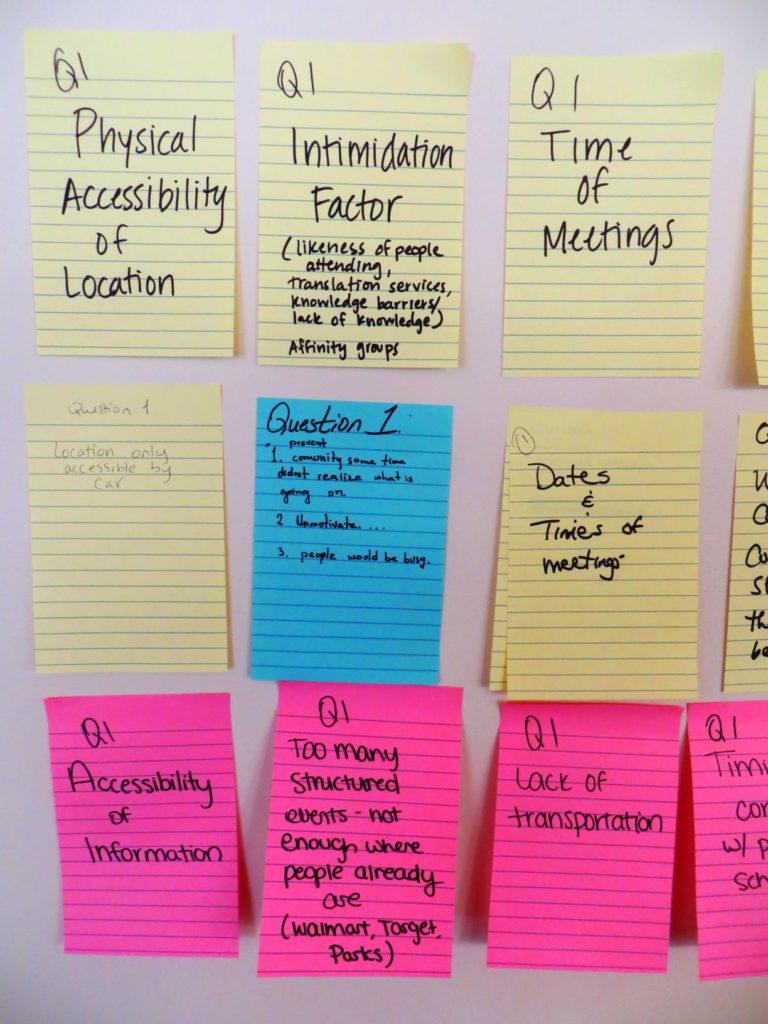
Before the Meeting: Develop Questions
A successful activity is guided by good questions. Here are some quick tips to keep in mind when developing questions:
- Participants should be able to answer the questions without a lot of technical knowledge.
- Aim to ask questions that draw on participants’ experiences.
- Ensure questions reflect areas of your project on which your participants can provide meaningful input.
- Limit yourself to one to three questions – this process takes some time and you want to be able to get through them all!
For example, during your visioning workshop, you might ask: “What would you like to change about your neighborhood?” This question is easy for participants to answer as it draws on their own personal experiences and preferences. Once you have your questions, you’re ready to conduct the activity!
Follow these easy steps to get quality engagement from your participants using card storming:
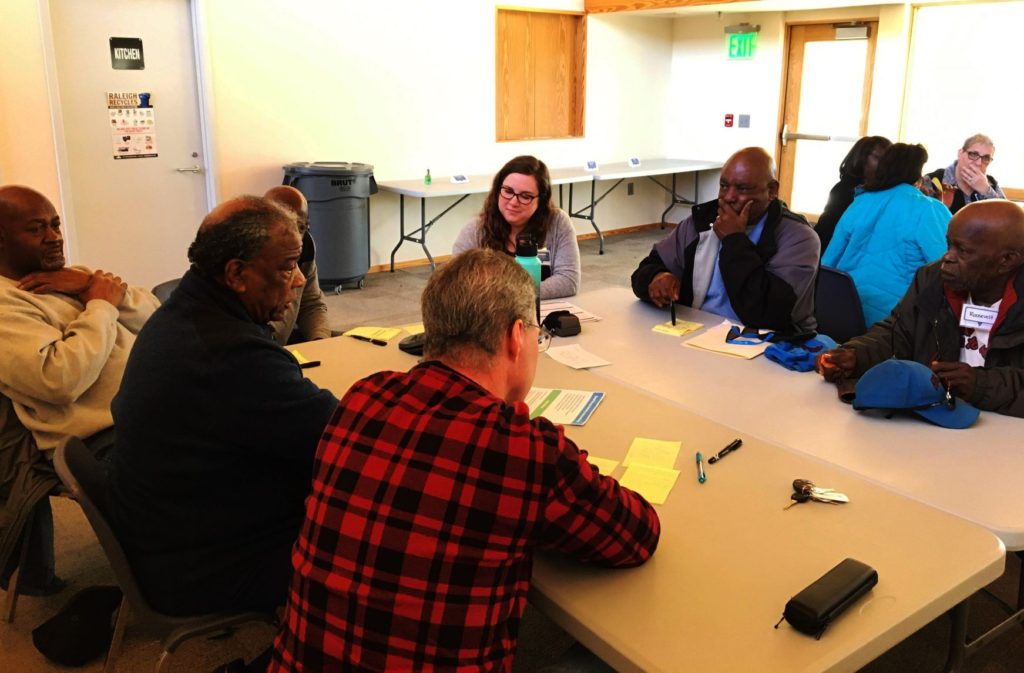
Step 1: Individual Brainstorming
One of the most challenging parts of facilitating meetings can be to get all participants involved in the process – including the ones who are less vocal! Card storming provides everyone the opportunity to write down their individual ideas on sticky notes before coming together as a small group. For the introverts in the room, or those who are internal processors, this step will be key to including their voices in the conversation.
Instructions:
The facilitator asks the first card-storming question and then instructs participants to silently write down as many ideas as possible on their own for a set amount of time. Note:
- Each idea should be written on an individual sticky note.
- The facilitator should ask the participants to write legibly as others will be sharing out their responses.
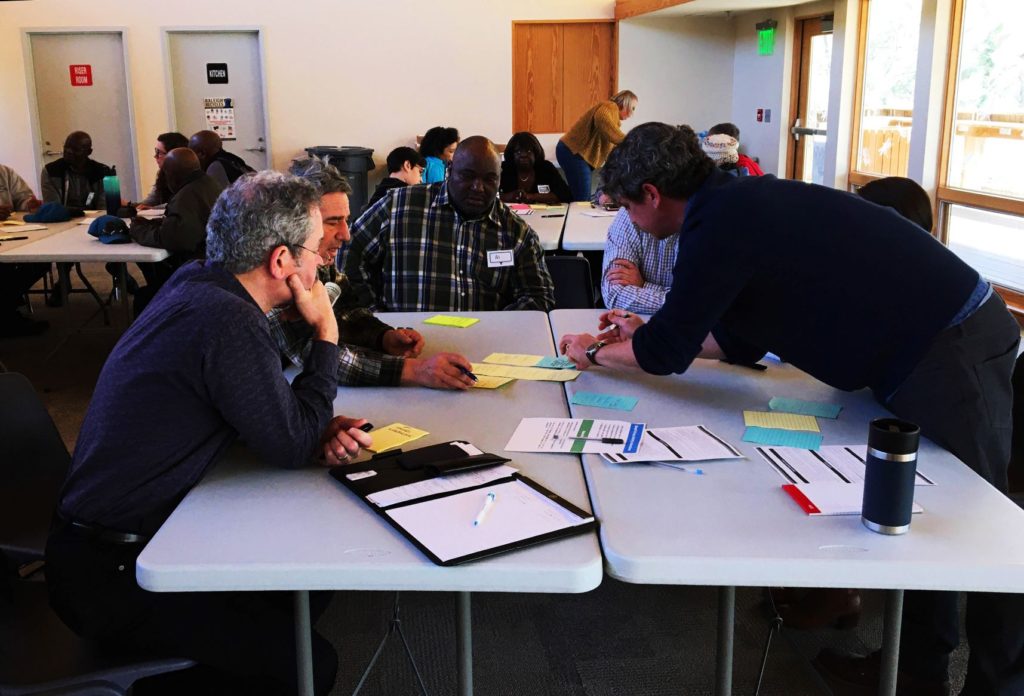
Step 2: Small Group Consensus
Once the individual brainstorming time is up, it’s time for small group consensus building! Participants likely came up with a lot of ideas on their own and once those ideas are combined, you’re up to a lot of sticky notes! Now it’s time to narrow them down and see what the whole group values most or prioritizes.
Instructions:
Go around the table and have each participant share out their answers to the question. Facilitators should then lead the group in a discussion to collectively decide on their top three to five ideas. The small group should choose a Participant Leader to post the top sticky notes under the question posted on the wall or on an easel board.
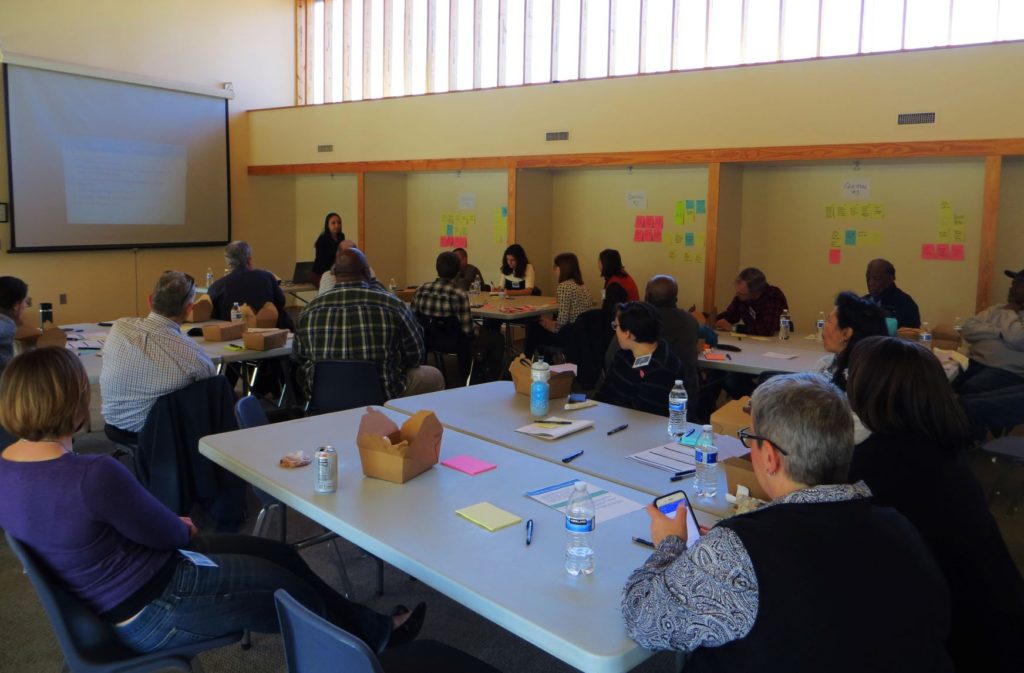
Step 3: Repeat Steps 1-2 (optional)
You have two options at this point:
- Repeat steps 1-2 for the remaining questions posed to participants.
- Continue on with steps 4-6 for your first question before starting over at step 1 with your next question.
Both options can work well – it just depends on the amount of time you have and how the activities are progressing.
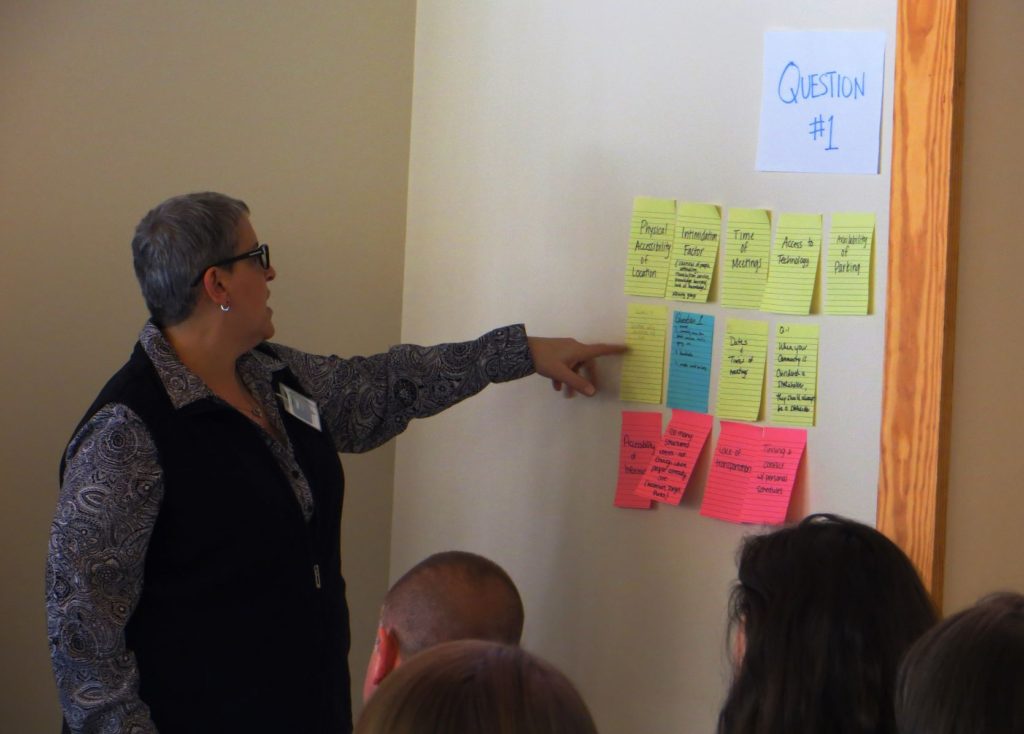
Step 4: Large Group Report Out
This is a simple step: The Participant Leader from each small group should now report out their top sticky notes to the large group. Participants can ask clarifying questions about ideas and get a sense of how other groups interpreted and answered the question.
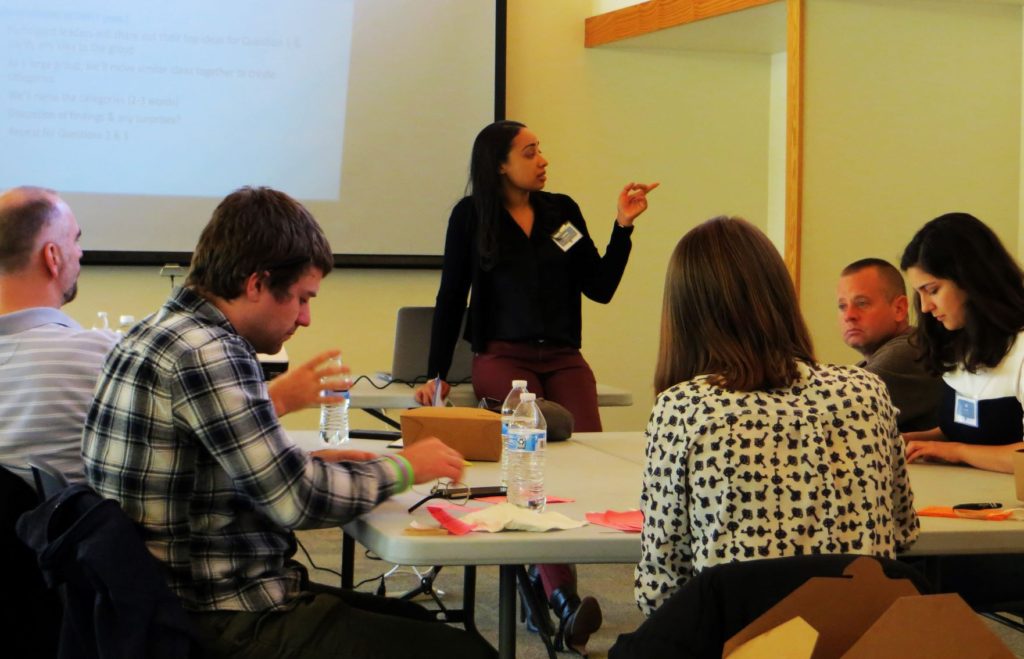
Step 5: Identifying Themes
After sharing all ideas, the Discussion Moderator will ask the large group to suggest where to place each idea to form clusters of sticky notes with similar ideas or themes (duplicate ideas should be placed together). The Participant Leaders should move the sticky notes according to the large group decision.
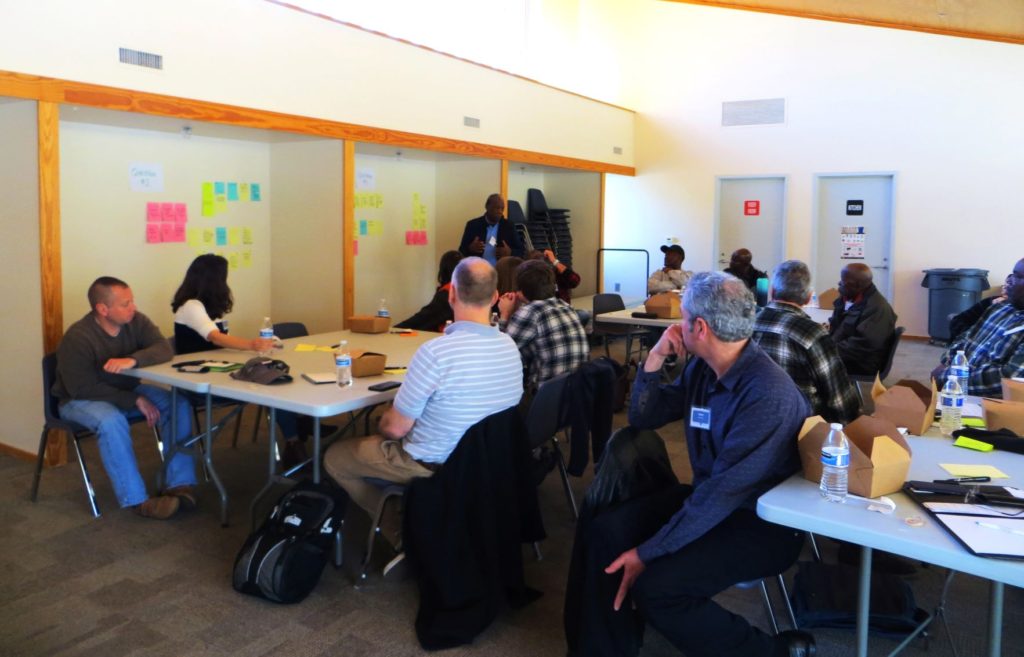
Step 6: Giving Names to Themes
Now it’s time to build some consensus among the whole group!
You’ll want to start by building themes with similar ideas. In your visioning workshop one group might have suggested “Add a sidewalk on Main St,” while another answered “Update the crosswalks at the South Street and East Street intersection.” Both ideas could be placed under a theme such as “Improve Connectivity” or “Pedestrian Safety.”
It is crucial to involve the large group in this discussion to ensure you understand the intent behind their ideas. If you don’t clarify with the participants, later, back at your desk, you’d have to make some assumptions about whether the participants want to improve connectivity or increase pedestrian safety. By having participants name each cluster of ideas, you’ll know for certain what their intent, motivation, and ideas really are. Also, by putting a name to the stickies, you make sure that all participants agree with how their feedback is being interpreted.
Instructions:
In this step of the activity, you’ll ask the large group to agree upon a theme name for each cluster of sticky notes. The Discussion Moderator should write this name on a sticky note and post it above the participant notes.
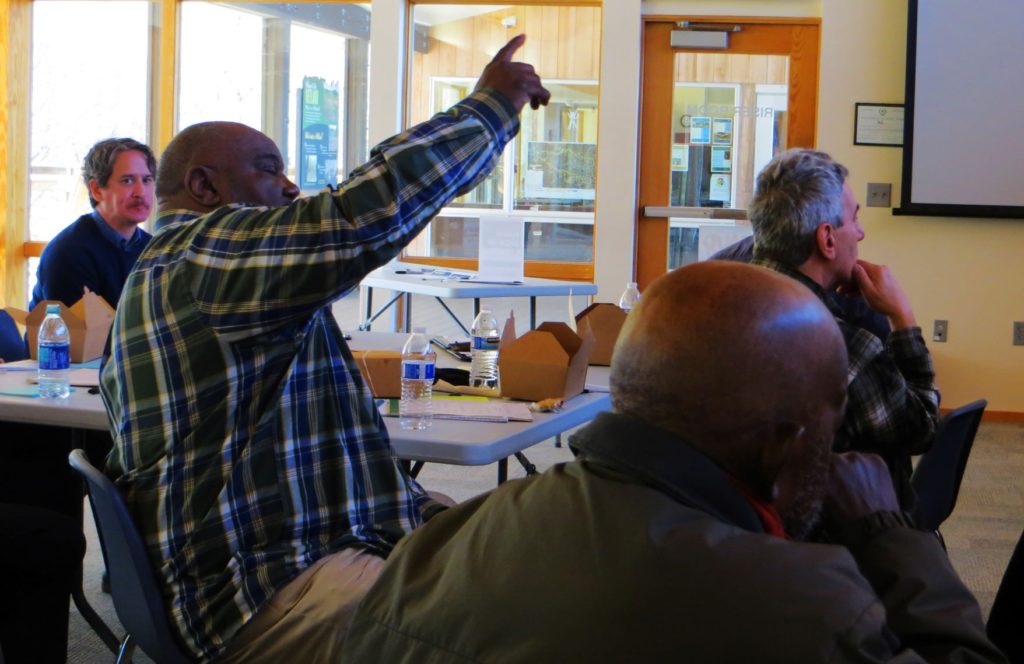
Step 7: Last Thoughts and Questions
Once all stickies have been posted, clustered, and themed, it’s important to give participants a chance to ask questions, point out missing information or ideas, and clarify their responses. Set aside some time at the end of the workshop to make sure all these items are addressed and ensure that everyone leaves with a sense that their time was well-spent, and their feedback was useful.
Card storming is one of my favorite ways to collect participant feedback because it allows participants individual time to think, provides a non-intimidating small group to share their ideas out to, and a large group activity to build consensus. A workshop with card storming puts the participants in the driver’s seat and allows for every single voice to be heard. And you know what we say: the best decisions are made when the most voices are heard!
Want to be notified when we release a new blog post? Subscribe here. And don’t forget to follow us on Facebook and LinkedIn!
About the Author: Deirdre Scanlon is the Communications Engagement Manager for Public Participation Partners (P3). When not dreaming up new ways to equitably engage the public, you can find Deirdre tending to her houseplants or walking the trails of Raleigh, NC.
Sources:
- This activity is based on the Institute of Cultural Affairs Technology of Participation Consensus Workshop Method.
- Card Storming. (n.d.). Food and Agriculture Organization of the United Nations. Retrieved April 14, 2021.
- Community Engagement Process Development. (February 2020). City of Raleigh.


Sorry, the comment form is closed at this time.